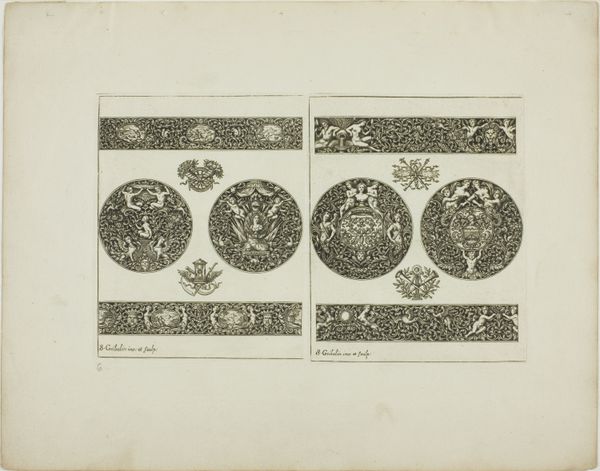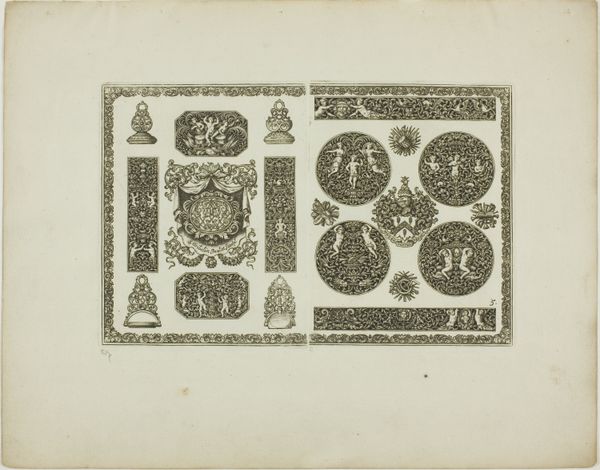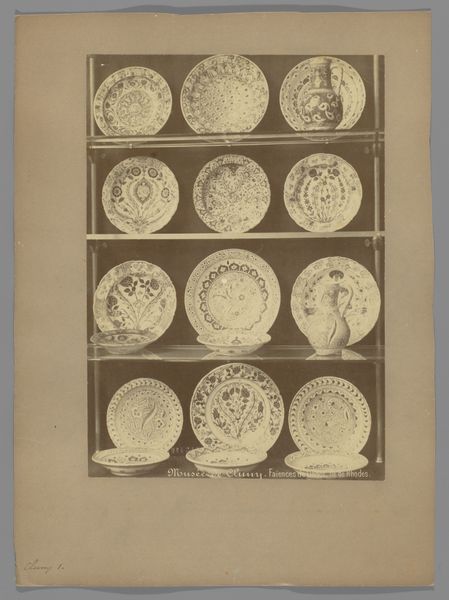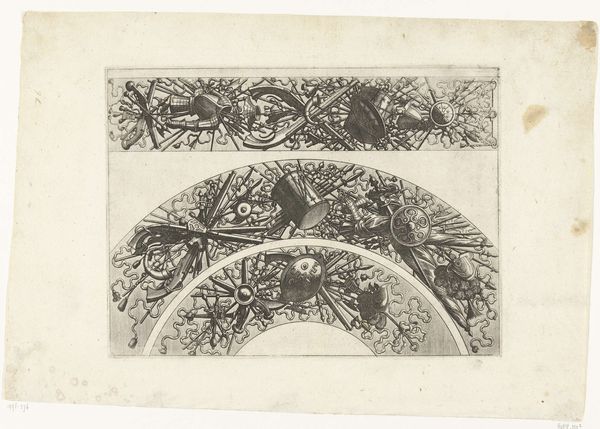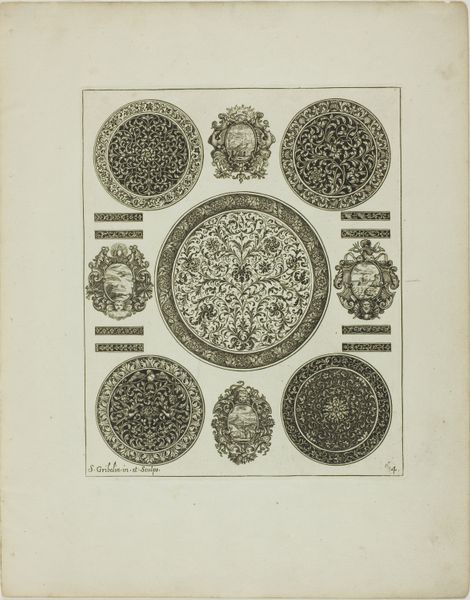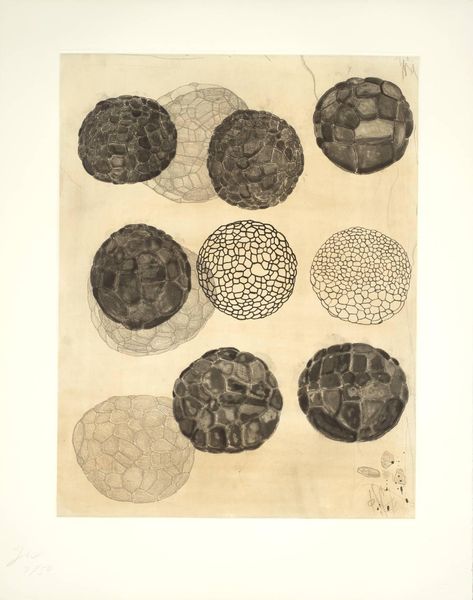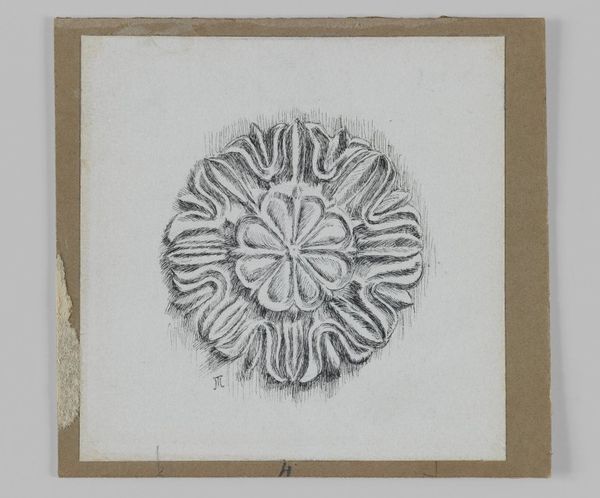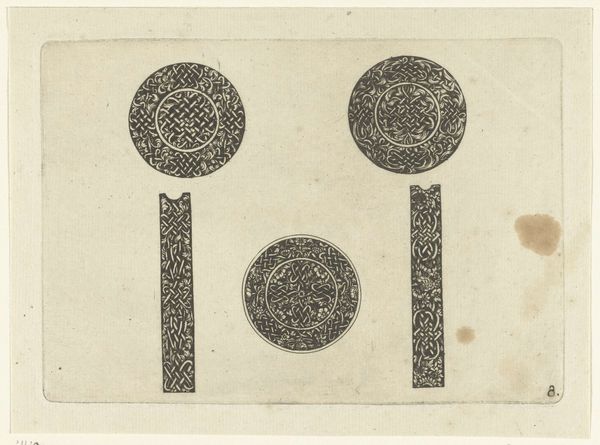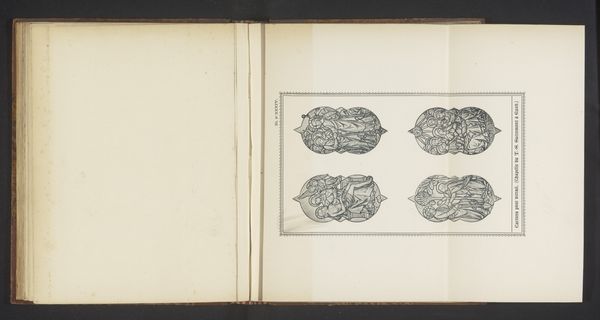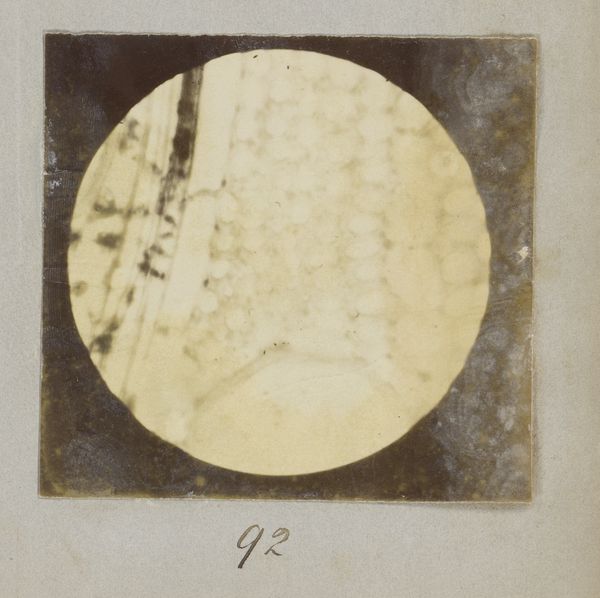
drawing, graphic-art, ornament, print, paper, engraving
#
drawing
#
graphic-art
#
ornament
#
pale palette
#
baroque
# print
#
paper
#
engraving
Dimensions: 132 × 203 mm (image/plate); 233 × 295 mm (sheet)
Copyright: Public Domain
Editor: Here we have "Plate Seven, from Book of Ornament" by Simon Gribelin II, created in 1704. It's an engraving on paper, full of intricate details. I'm struck by the sheer density of the ornament and how formal it appears. What do you see in this piece, and how do you interpret it in the context of its time? Curator: This engraving is a window into the Baroque era's obsession with power and display. Ornament wasn't just decorative; it was a visual language of social status, gender roles, and colonial reach. Who decided these patterns and what was deemed "proper" to show wealth and good taste? How are women portrayed in the images here? Are there power imbalances reflected in the scenes depicted? Editor: I notice that the figures in the larger ovals seem to be lifted from classical mythology, and those figures appear quite idealized. I imagine there was a deliberate effort to link the owner of these patterns with historical ideas of grandeur? Curator: Exactly! This idealization often served to legitimize ruling powers and mask the realities of everyday life for many people, like rampant poverty. The precision of the engraving speaks to the control and order the elite classes were trying to project, don't you think? Considering its availability as a "book", imagine the messages it conveyed as it was disseminated widely through different hands in society, reproducing some views and silencing others? Editor: So, looking at it through that lens, this ornament book becomes not just a collection of pretty patterns but a tool for reinforcing the social and political structures of the time. It makes me consider how design still functions similarly today. Curator: Precisely. Ornament, seemingly benign, actively participated in shaping identity and maintaining hierarchies. Questioning its historical context lets us recognize and critique the ways visual culture operates in our present. Editor: I'll definitely look at Baroque art differently from now on, appreciating the technical skill but also considering the embedded ideologies. Thanks!
Comments
No comments
Be the first to comment and join the conversation on the ultimate creative platform.
